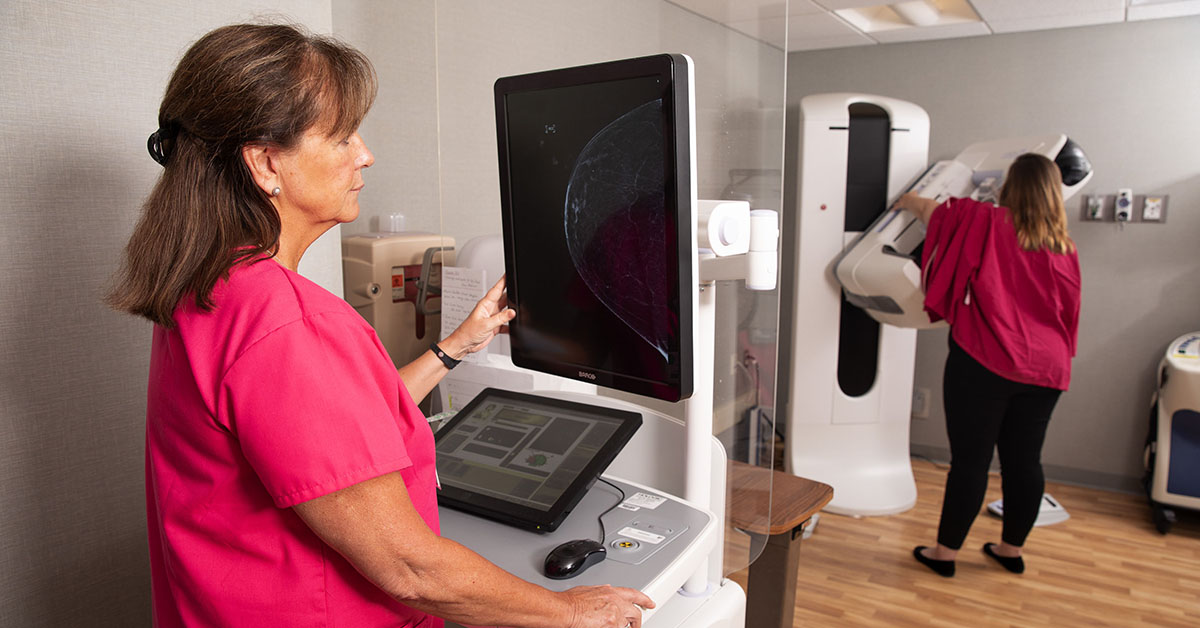Important announcement concerning Temple Health and Keystone First. Our provider agreement with Keystone First, is scheduled to end on July 31st. Learn about your options to continue receiving care at Temple Health.
Breadcrumb
- Home
- Thrive Cancer Blog
- Are Mammograms Needed After Breast Reconstruction?

Are Mammograms Needed After Breast Reconstruction?
-
Over the years, routine mammograms have helped save countless lives. If you’re a woman who has had a mastectomy and breast reconstruction surgery, you may think about that fact and wonder—do I still need to be screened for cancer in my reconstructed breast?
“The majority of women are not getting routine mammograms after breast reconstruction,” said Neal S. Topham, MD, FACS, Chief of Plastic and Reconstructive Surgery at Fox Chase Cancer Center.
After a mastectomy, there usually isn’t enough deep breast tissue left for cancer to return. If breast cancer does return, it would most likely appear on the surface of the breast where it can be felt during a routine physical exam, Topham explained.
Your oncologist and your plastic surgeon will usually provide these exams. It’s also still important to be aware of how your breasts normally look and feel.
“For instance, be aware of any new or changing masses, any pain or discomfort, or any redness or firmness on the surface of the skin,” Topham said.
“Women should also have MRI exams to monitor their silicone implants for potential rupture. The FDA recommends the first MRI at three years after placement and every two years thereafter until the implant is replaced or removed,” Topham said. Saline implants do not require MRI exams.
Of course, if you had just one breast reconstructed after a single mastectomy, you will still need mammograms of the unaffected breast.
You also may need mammograms if you have your breast reconstructed after a lumpectomy, if your breast was reconstructed using your own tissue, or if you’ve had an implant placed in your healthy breast so that it matches the rebuilt breast.
If you have a mammogram for any reason, be sure to tell the radiology technician that you have a breast implant. Doing so could improve the accuracy of your test and avoid damaging the implant.
“If there’s an implant in place, the technician can modify the technique so that they’re imaging the breast tissue rather than imaging the implant,” Topham said.
What else to know about breast implants
Here’s something else to keep in mind about breast implants—eventually, they may need to be replaced.
“About half of breast implants are removed (and typically swapped for another implant) before 10 years,” Topham said. One reason is that excess scar tissue can develop inside the breast; but another reason is that both saline and silicone-filled implants can leak, rupture, or fall out of position.
Topham generally recommends replacing silicone-filled implants after 10–12 years. Saline implants can stay in a little longer.
“When you get close to the end of the implant life, the chance of rupture is going to increase,” Topham said. “So, it’s easier just to start the clock over again rather than wait for it to rupture.”
Stay in touch with your plastic surgeon
The best way to monitor the integrity of your breast implants is with a yearly evaluation. Depending on the type of implant you have, you may need an MRI to make sure everything is OK.
“If you’ve had implants and it’s been a few years since you’ve seen your plastic surgeon, then you should make an appointment to see one,” Topham said.
Learn more about our plastic surgery team at Fox Chase Cancer Center.
Tags
Share
-
Share with Facebook
-
Share with twitter
-
Share with email
-
Print this
